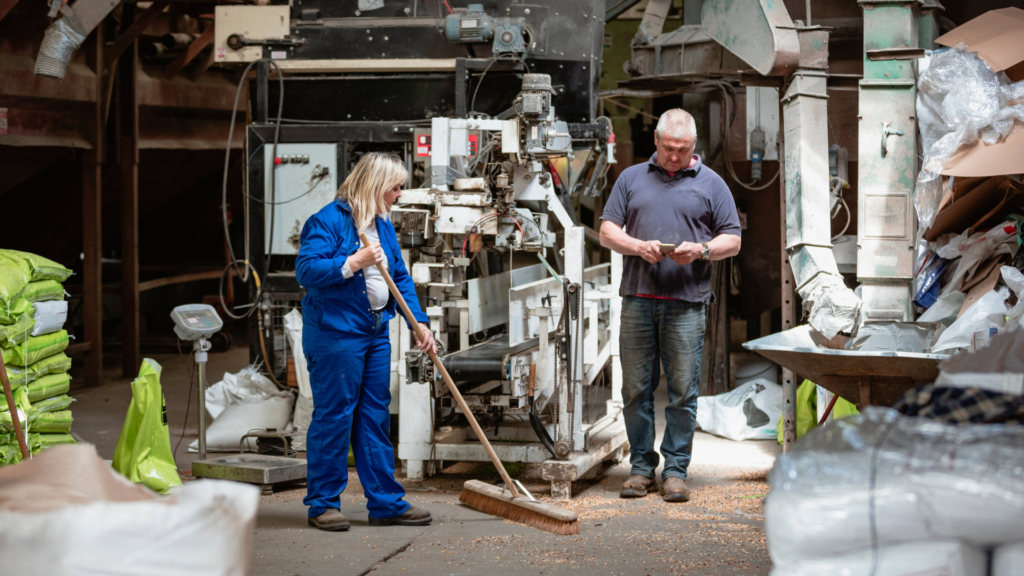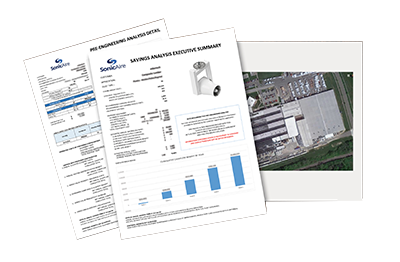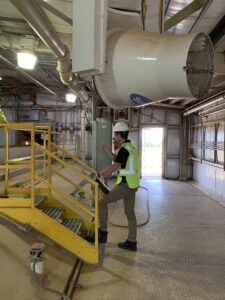
Standards do provide leniency in how you mitigate fugitive dust buildup in overhead and hard-to-reach spaces. The ideal solution for you may not make sense for someone else. Ultimately, you have to review the costs and risks associated and make the best decision possible.
Here are four common ways facilities manage combustible dust:
1 – Capture Dust at the Source
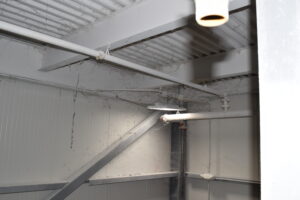
These systems can be more complicated to manage and require regular maintenance and upkeep. Depending upon how quickly your facility generates dust, managing the waste can be cumbersome. However, dust collection systems are preferable to dealing with fugitive dust’s repercussions whenever you are grinding, polishing, or cutting materials.
Inevitably though, these dust collection systems can only capture so much of the combustible dust. As we noted in a previous blog, in some facilities such as wood pellet manufacturing, even if you capture 99.99% of dry dust, it would still create more than 130 pounds of airborne dust each week. Even with the dust collection system, you’ll still need to manage dust in hard-to-reach spaces.
2a – Manually Clean as Needed
In the vast majority of manufacturing and processing facilities, the organization’s staff cleans fugitive dust manually from support beams, ductwork, and other spaces. The cost here can be extensive depending upon how many people are needed? and how much time it takes to complete the job. In addition to the labor, you might have to purchase or rent equipment to get the job done.
- The height of the ceiling likely requires a scissor-lift.
- Vacuums may be needed to gather large amounts of dust. (While it’s not an approved method, some companies use backpack blowers to remove built-up dust.)
- They may also need brooms or vacuum systems to clean up the dust that ultimately settles on the floor.
None of this takes into account the most significant cost of all: lost production. Busy facilities lose money when the line shuts down. Essentially, if you’re not making something, you’re not making money. Shutting down operations to clean can be a costly endeavor.
Because of this, facilities will often delay housekeeping as much as possible and only schedule a shut down when it is way overdue to remove combustible dust buildup.
Unfortunately, this spot check approach may miss hard-to-see areas where dust is building up beyond compliance expectations. If you’re lucky, this never becomes a problem. All it takes is one visit from an inspector, though to make the cost of a shutdown seem trivial.
2b – Manually Clean on a Schedule
While the process doesn’t change, sometimes the scheduling does. When you’re able to schedule housekeeping at regular intervals, it minimizes the risk of an explosive dust event and makes it easier to clean. Over time, it could reduce the overall cost of cleanings as staff becomes aware of what it takes to get the job done. If completed frequently enough, it may be worth investing in cleaning equipment to get the job done faster without paying a premium to rent.
3 – Hire a Third-Party for Housekeeping

All told, the route will be more expensive than a DIY approach. Instead of handling it with existing staff, you’re paying the overhead for another company. At the same time, knowing they did the job right without risking any of your team may be a benefit. In some locations, there may be spaces 60-80′ off the floor. Getting to these spots is not just tricky, it’s dangerous. By hiring someone else to come in and take care of it, you are limiting your employees’ exposure to risk. Plus, you’ll have someone to call if OSHA comes to visit and there are any issues .
4 – Prevent Dust-Buildup
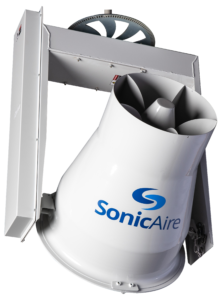
That’s precisely what dust control fans were designed to do. They automatically operate day and night, creating an air barrier that prevents fugitive dust from rising into the ceiling and settling there.
If it doesn’t buildup in overhead spaces, you don’t have to clean it.
Dust settles to the ground, where it can be easily swept and captured during standard cleaning procedures. The benefit of this option is the time and cost savings. You don’t have to shut down to clean. Your staff doesn’t have to ride a lift into the ceiling to clean off the dust.
Provided they are installed and operated according to the manufacturers’ instructions, there shouldn’t be any need for significant housekeeping in these areas.

